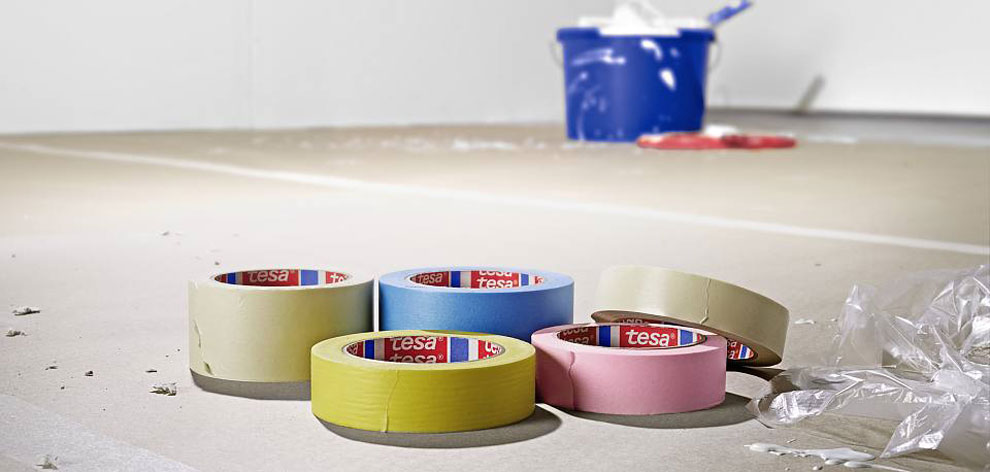
Working with tape. How do I use tape and which tape should I use?
Which tape should I use for which task, and what should I pay attention to when working with tape? The specialist performing the job should be able to say: "It's not the tools that failed." They want their materials to help them complete the work properly. Using the right tape contributes to a great result.
The applications for tape are endless and sometimes personal. To help specialists choose the right tape, it's important to know some technical details and key points. We'll explain those below.

- What type of work am I doing?
- What are the location and environmental factors?
- How long should the tape stay in place?
- What’s the best way to remove the tape?
- What surface am I masking off?
What kind of work am I doing?
Your choice of tape depends on the type of work you’re performing. Are you upholstering, painting, plastering, spraying, or something else? Tape comes in various types and is suitable for a wide range of industries and applications. The nature of the task often gives a first clue as to which tape is most appropriate.
What are the location and environmental factors?
The conditions under which you apply the tape affect the end result. Consider the following factors:
- Will the tape be used indoors or outdoors?
- Temperature fluctuations in the environment, product, or surface
- Humidity and condensation levels
- Sunlight and UV exposure
What is the best temperature for applying tape?
The ideal temperature for applying tape is between 10°C and 25°C (room temperature). Ensure the surface is dry before applying. In these conditions, the adhesive behaves optimally!
How long should tape remain in place?
The duration for which the tape should stay is a key factor in determining the right type. The longevity is influenced by the tape’s adhesive layer, with factors like UV exposure, temperature, and environmental conditions affecting this.
How do I remove tape effectively?
When removing masking tape, avoid damaging the surface or leaving adhesive residues. Follow these tips:
- Remove the tape evenly at a 45-degree angle.
- Do not pull too hard or too fast.
- Remove the tape immediately after completing the task.
What surface am I masking off?
The type of surface affects the choice of tape. Here are some key considerations:
- Be cautious of surfaces treated with anti-adhesive products like wax.
- Be aware of surfaces containing plasticizers (e.g., vinyl wallpaper).
- For rough or uneven surfaces, use tape with strong adhesive power.
- Surface condition is crucial for adhesion. It must be clean, dry, and free of grease, oil, or dust.
Tape for Coated or Painted Surfaces
Before masking painted surfaces, perform a test to ensure good adhesion. Use a clean-removable painter's tape.
Tape for Plastic
Use masking or stucco tape for plastic surfaces, and only for a short period.
Tape for Metal
Apply tape briefly to metal surfaces, as prolonged exposure can cause oxidation. Use a suitable masking tape for this purpose.
Tape for Glass
Use UV-resistant tape for glass, especially if it’s exposed to sunlight. Consider Washi tape or protective film for general use.
Tape for Wood
Opt for low-adhesion tapes like Washi or stucco tape for wooden surfaces.
Tape for Concrete
Perform a test before masking new concrete surfaces. For permanent marking, use hard adhesive tape like concrete or marking tape.
Tape for Natural Stone
Avoid using tape on natural stone (e.g., marble) to prevent discoloration.
Tape for Masonry & Brick
PVC masking tape works well on clean masonry. Be mindful of any substances that might affect the tape's adhesion.
Tape for Wallpaper
For paper wallpaper, use a low-adhesion tape like Washi masking tape.


